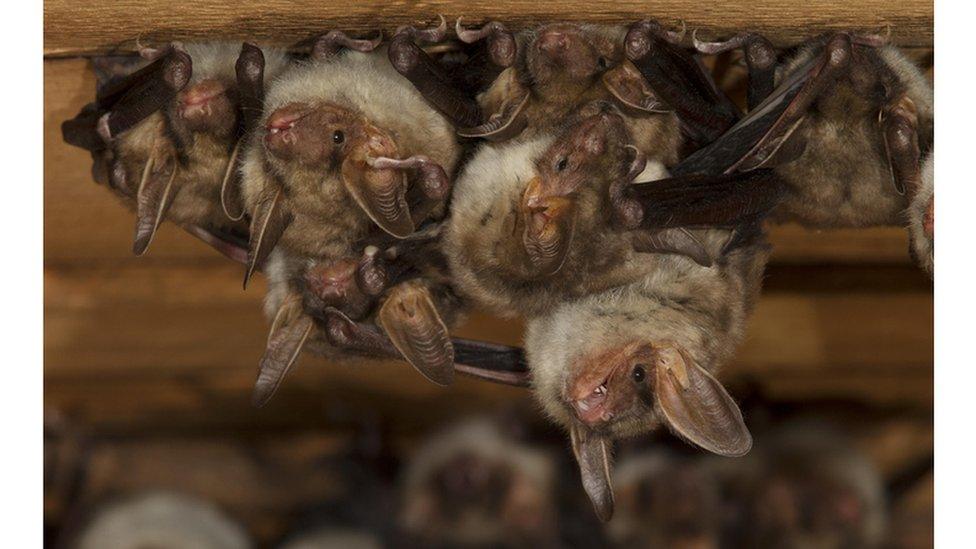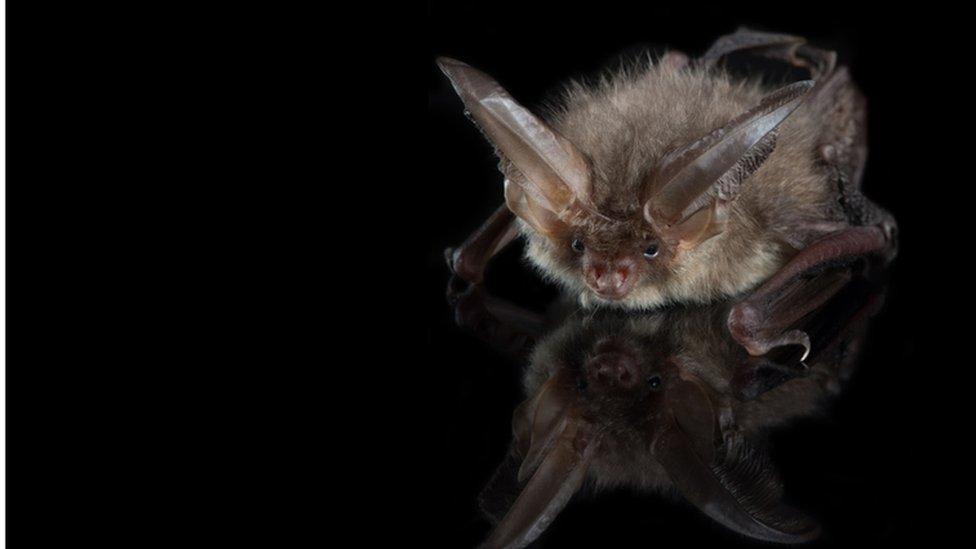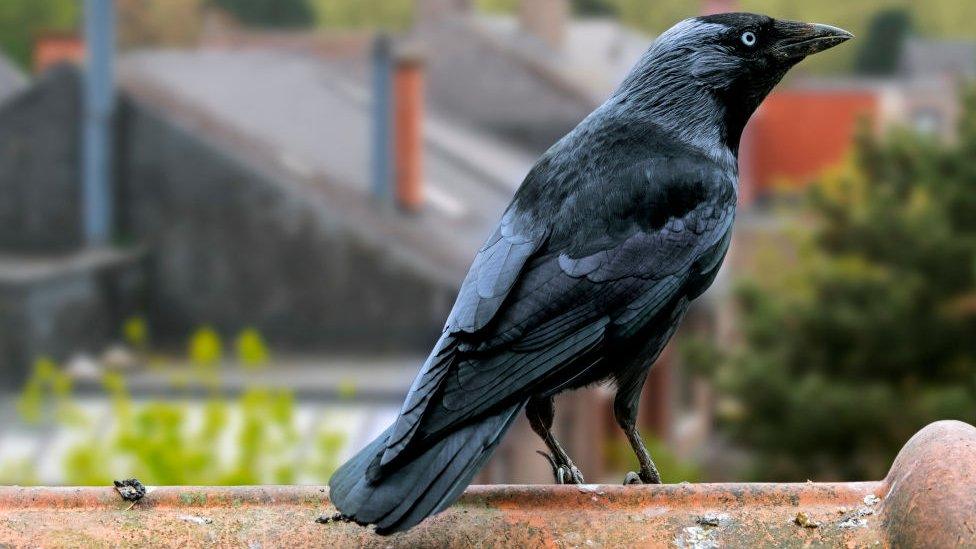Searching for poos: Rare bat found in a church in Somerset
- Published
- comments

The bats had left a trail of poo for volunteers to find!
A grey long-eared bat - one of the rarest bats in the UK - has been found in a small church in Somerset.
Volunteers found the bat thanks to some special analysis of its poo that they found inside the church.
The bat was found by the National Bats in Churches Survey, which is a huge project that looks at bats across the country.
It's only the second time this bat has ever been found by the group.

There's less grey-long eared bats than there used to be in the UK
The grey long-eared bat
The last time the Bats in Churches group found the grey long-eared bat was in 2020.
They're very rare and there are only around 1,000 of them in England.
Grey long-eared bats like to live in open grassy spaces that have not been used for farming or fertilised, and due to farming and use of land across the UK, their habitat has reduced by 92% in the past 100 years.
By knowing where these rare creatures live, conservation groups can work to keep the roosts - bat nests and families - safe.

Bats love to find cosy spots in churches to 'hang out' - these ones were found in a church attic in Germany!
Discovery by poo
The National Bats in Churches Survey was set up by citizen scientists, who are people who take part in scientific studies in their spare time.
They often look at poo in churches to work out if bats are living there, as it's the safest way of investigating without disrupting the bats' roosts.
The grey long-eared bat looks and acts fairly similarly to the brown long-eared bat - which is more common in the UK.
To work out exactly which bat they had found in the church, the volunteers tested the DNA in the bat poo that they found, to see which bat it was.
DNA is the special chemical code that defines what species we are. With a sample, they could work out what animal had left the poo!

The grey and brown long-eared bats are quite difficult to tell apart! Can you notice any differences?
Looking after bats in the UK
Through surveying where bats live in the UK, experts can plan the best ways to help the species survive.
Carol Williams, the director of conservation at the Bat Conservation Trust, said the discovery in Somerset was "very encouraging".
Since 2017, a huge space in Devon has been looked after to create the right habitats for bats to live.
This included making sure the right plants were growing so bats could feed, as well as finding a safe place to roost.
- Published4 November 2022

- Published3 November 2022

